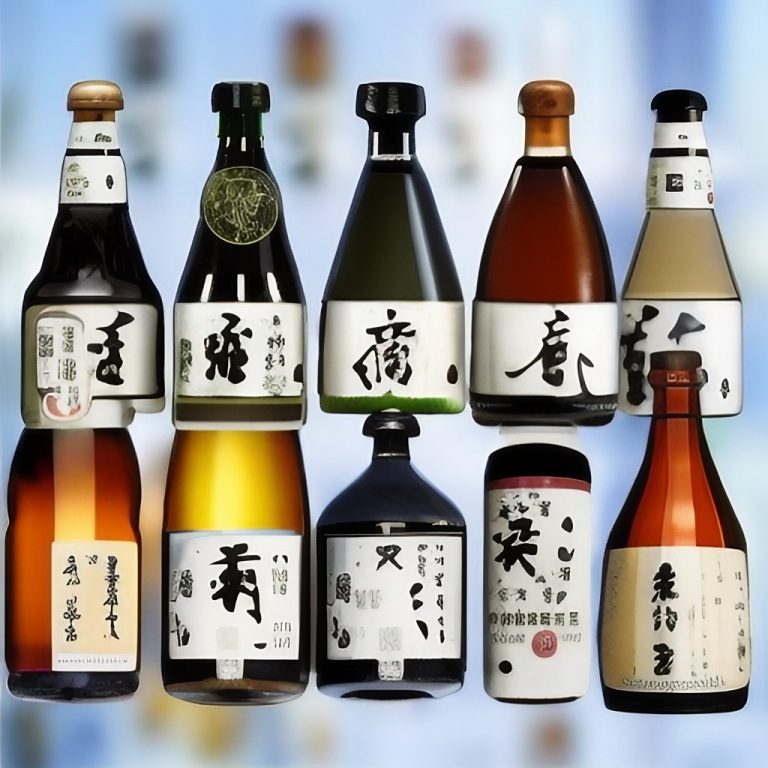Seductive Sips: Unraveling the Enchanting World of Sweet Sake – A Journey Throug
Are you ready for a tantalizing adventure? Let’s traverse through the seductive world of sweet sake, a fascinating concoction and truly unique alcoholic beverage. From its mysterious origins to its many varieties, there is much to uncover about this delightful drink. Join us as we take an in-depth look at all that makes sweet Japanese sake so dazzling and one-of-a-kind. We’ll explore flavors and aromas plus special brewing techniques exclusively used in crafting these exquisite sakes. Whether you are new to the hidden realm of made loved sweet sake or have always been intrigued by it, I’m sure your journey with us will be perfect for any aficionado looking for knowledge or a beginner simply seeking inspiration! While there are many types of sake on the market, let’s understand what Sweet Sake is first.
Introducing Sweet Sake – An Overview of the Category
Sweet sake, also known as “amazake,” is a type of sake that offers a delightful contrast to the dryer styles often associated with the beverage. Made with steamed rice, koji, and water, sweet sake undergoes a unique fermentation process that allows it to achieve its signature flavor profile. Instead of allowing alcohol content to develop during fermentation, the process breaks down the rice into sugars, resulting in a sweet and creamy taste that is reminiscent of dessert. While traditionally consumed as a warming winter beverage, sweet sake offers a versatile flavor that can be enjoyed year-round, both on its own and as an ingredient in cocktails and cuisine. Whether you are a seasoned sake lover or looking to expand your palate, sweet sake is a category worth exploring. Pic a bottle of sake today and let us know how you like.
What Makes Sweet Sake Unique – The Anatomy of the Flavor Profile
Sweet sake is a unique beverage that is a delight to the palate with its complex flavor profile. This Japanese drink is surprising in its taste and texture, characterized by a smooth sweetness that sets it apart from most alcoholic drinks. What makes sweet sake unique is how its flavor profile is formed. Unlike regular rice-based drink, sweet sake is brewed with the addition of sakekasu, which is a fermented rice mash that contains residual sugar. The use of this ingredient creates a unique sweet and savory taste, with an elegant aroma that lingers. Moreover, sweet sake undergoes a longer brewing and aging process that further enhances the overall taste, creating a rich, creamy texture with a slightly spicy finish. All these aspects combine to make sweet sake an extraordinary drink that deserves respect and appreciation.
Savory or Sweet – Expert Tips on Pairing Dishes with Sweet Sake
Pairing dishes with sake is an art form that requires skill, knowledge, and a willingness to experiment. For those who prefer a sweeter sake, it can be tricky deciding which dishes to pair it with. To make the most of your sweet sake, consider the flavors and textures of your food. In general, sweeter sakes pair well with savory dishes that have a more pronounced umami flavor, such as grilled meats, roasted vegetables, or dishes with soy sauce. The sweetness of the sake can counterbalance the saltiness and create a harmonious balance of flavors. Additionally, sweet sake also pairs well with desserts, especially those that are fruity flavors or creamy. Ultimately, the pairing of sweet sake with food is about balancing the flavors and creating an enhanced sensory experience that brings out the best in both the sake and the dishes you’re enjoying.
A Guide to Regional Tastes in Sweet Sake
Sweet sake, also known as “umeshu,” has a rich history in Japan and is beloved for its unique flavors and aromas. There are various regional variations of umeshu, each with its own distinct sweet taste and production techniques. For example, the Kishu region’s umeshu is renowned for its mellow and balanced taste, while Nagoya’s version is known for its stronger flavor. In addition, the Ishikawa and Toyama areas are famous for their “koku” (boldness) umeshu, made with high-quality plums and rich in taste. By exploring the regional flavors of sweet sake, you can gain a deeper appreciation for the nuances of this treasured Japanese beverage.
Grand Finale – Serving and Storing Sweet Sake Like a Pro
Serving and storing sweet sake like a pro is not as complicated as it may sound. First and foremost, make sure to store your sweet sake in a cool and dark place, away from direct sunlight and heat sources, to prevent it from spoiling. When it comes to serving, it’s important to choose the right temperature for the sake you’re serving. A chilled sweet sake is ideal for enjoying on a hot summer day, while a room temperature sake is suitable for sipping during the cooler months. Additionally, serving sweet sake in a traditional porcelain cup or a wine glass can enhance the drinking experience. So, the next time you’re serving sweet sake, remember to keep it cool, choose the right temperature, and serve it in a beautiful glass for the grand finale!
Bonus Content – Top 5 Recommended Brands for Beginners (with tasting notes)
For those new to the world of spirits, trying to figure out where to start can be daunting. Luckily, we’ve put together a list of the top 5 recommended brands for beginners, along with tasting notes to help you find your perfect match. In the vodka category, we suggest trying Tito’s Handmade Vodka – its smooth texture and hints of pepper make it great for sipping or mixing in a cocktail. Moving on to gin, Hendrick’s Gin is a must-try with its unique blend of botanicals including cucumber and rose petals. For rum lovers, we recommend Flor de Caña 4 Year Old Extra Seco – its light and dry profile is perfect for a refreshing mixed drink. If tequila’s your thing, Casamigos Blanco is a great choice with its citrus and vanilla notes and subtle hint of sweetness. Finally, we suggest Buffalo Trace Bourbon for those looking to explore the world of whiskey – its caramel and vanilla undertones make for a smooth and easy finish. With these options, you’ll be well on your way to finding your favorite spirits to enjoy or impress your friends with at your next gathering.
What is sake?
Sake is a traditional Japanese alcoholic beverage made from fermented rice. It is often referred to as “rice wine,” although its brewing process is more similar to that of beer. The fermentation process involves the conversion of starch in rice into sugar, which then turns into alcohol through the action of yeast. This Rice-Based Drink typically has an alcohol content ranging from 13% to 20%.
Sake is known for its unique flavor profile, which can vary depending on the type of rice used, the fermentation method, and the degree to which the rice is polished. It can be enjoyed either warm or cold, depending on personal preference and the type of sake. Served in small cups called ochoko, sake is an integral part of Japanese culture and is often consumed during special occasions, ceremonies, and social gatherings.
Conclusion
Sweet sake’s unique flavor profile offers a touch of sweetness for us to savor and enjoy. Whether savory or sweet, it pairs well with many dishes, making it versatile and enjoyable. Different regions in Japan offer subtle variations to the flavor profile, providing an ever-evolving range of tasting notes to explore. For those needing guidance on what brands to try first, our top five picks are sure to provide an accurate representation of the sweet sake experience. Overall, this guide was developed with beginners in mind; however, even aficionados could gain something from discovering more about the history and nuances involved in creating this remarkable beverage. With its captivating blend of flavors and pleasant aromas, sweet sake is here to stay – helping individuals everywhere create distinct food and beverage pairings that result in unforgettable gastronomic delights!






